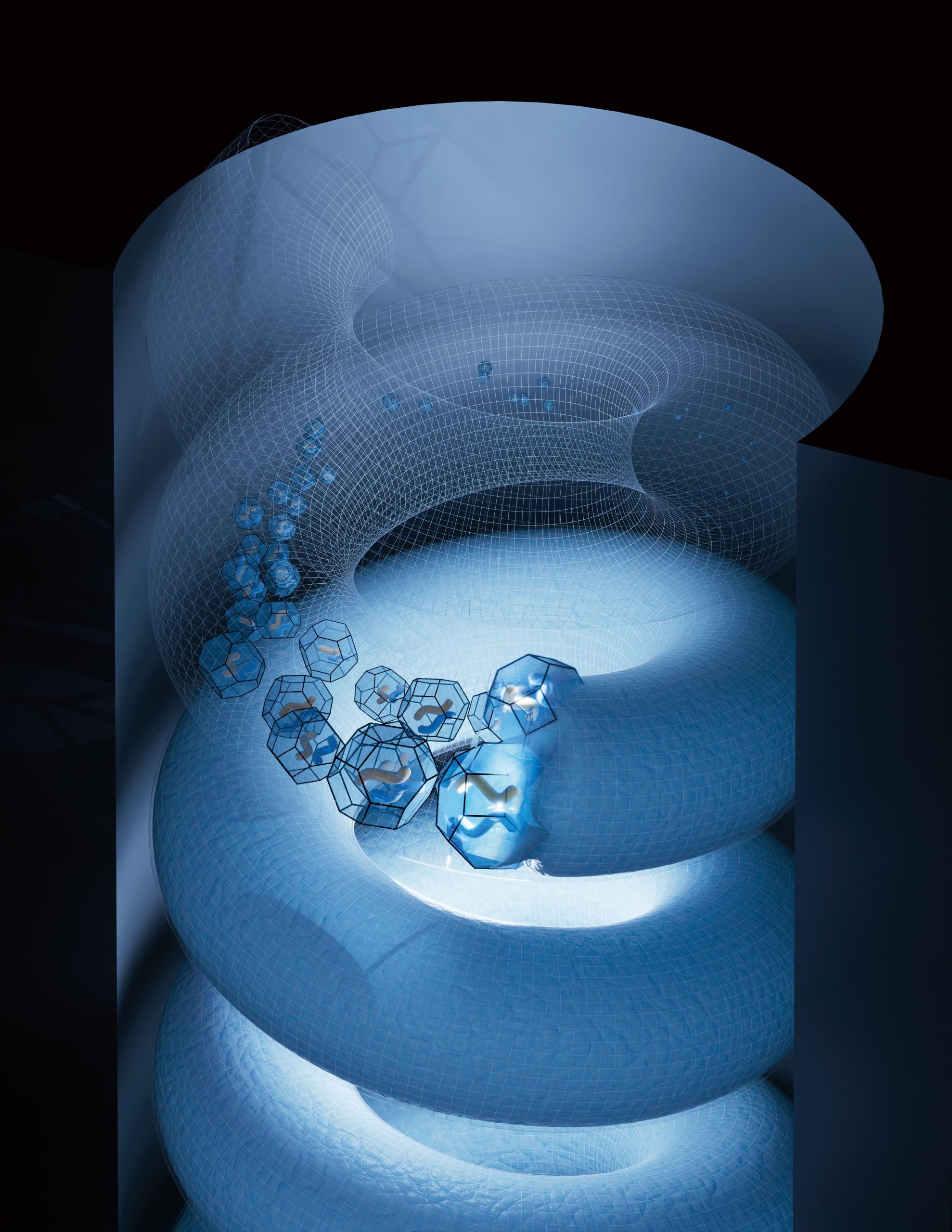Scientists Create Magnetic Nanohelices To Control Electron Spin at Room Temperature

Researchers in South Korea have created magnetic nanohelices that can control electron spin at room temperature.
Spintronics, also called spin electronics, explores information processing by using the intrinsic angular momentum (spin) of electrons rather than only their electric charge. By tapping spin, researchers aim to build data storage and logic devices that operate faster and consume less energy. A major obstacle has been creating materials that can precisely and reliably set the direction of electron spin.
In a significant step for spin nanotechnology, researchers led by Professor Young Keun Kim of Korea University and Professor Ki Tae Nam of Seoul National University have created magnetic nanohelices that control electron spin. The approach uses chiral magnetic materials to regulate spin at room temperature, and the findings have been published in Science.
“These nanohelices achieve spin polarization exceeding ~80% — just by their geometry and magnetism,” stated Professor Young Keun Kim of Korea University, a co-corresponding author of the study. He further emphasized, “This is a rare combination of structural chirality and intrinsic ferromagnetism, enabling spin filtering at room temperature without complex magnetic circuitry or cryogenics, and provides a new way to engineer electron behavior using structural design.”
Engineering Chirality at the Nanoscale
The research team successfully fabricated left- and right-handed chiral magnetic nanohelices by electrochemically controlling the metal crystallization process. A critical innovation involved introducing trace amounts of chiral organic molecules, such as cinchonine or cinchonidine, which guided the formation of helices with precisely defined handedness—a feat rarely achieved in inorganic systems.
Also, the team experimentally demonstrated that when these nanohelices exhibit a right-handedness, they preferentially allow one direction of spin to pass, while the opposite spin cannot. The above marks the discovery of a 3D inorganic helical nanostructure capable of electron spin control.
“Chirality is well-understood in organic molecules, where the handedness of a structure often determines its biological or chemical function,” noted Professor Ki Tae Nam of Seoul National University, also a co-corresponding author. “But in metals and inorganic materials, controlling chirality during synthesis is extremely difficult, especially at the nanoscale. The fact that we could program the direction of inorganic helices simply by adding chiral molecules is a breakthrough in materials chemistry.”
Measuring and Applying Spin Control
To confirm the chirality of nanohelices, the researchers developed an electromotive force (emf)-based chirality evaluation method and measured the emf generated by the helices under rotating magnetic fields. The left- and right-handed helices produced opposite emf signals, allowing for quantitative verification of chirality even in materials that do not strongly interact with light.
The research team also found that the magnetic material itself, through its inherent magnetization (spin alignment), enables long-distance spin transport at room temperature. This effect, maintained by strong exchange energy, is constant regardless of the angle between the chiral axis and the spin injection direction, and was not observed in non-magnetic nanohelices of the same scale. The above marks the first measurement of asymmetric spin transport in a relatively macro-scaled chiral body. The team also demonstrated a solid-state device that showed chirality-dependent conduction signals, paving the way for practical spintronic applications.
Professor Kim highlighted the potential impact: “We believe this system could become a platform for chiral spintronics and architecture of chiral magnetic nanostructures”. This work represents a powerful convergence of geometry, magnetism, and spin transport, built from scalable, inorganic materials. The ability to control the handedness (left/right) and even the number of strands (double, multiple helices) using this versatile electrochemical method is expected to contribute significantly to new application areas.
Reference: “Spin-selective transport through chiral ferromagnetic nanohelices” by Yoo Sang Jeon, Eunjin Jeong, Sang Won Im, Min Jun Ko, Jin Seo Lee, Jun Hwan Moon, Min Hyeok Lee, Jeong Kyu Lee, Sung Jong Yoo, Ki Tae Nam and Young Keun Kim, 4 September 2025, Science.
DOI: 10.1126/science.adx5963
Funding: National Research Foundation of Korea
Never miss a breakthrough: Join the SciTechDaily newsletter.
Source link

